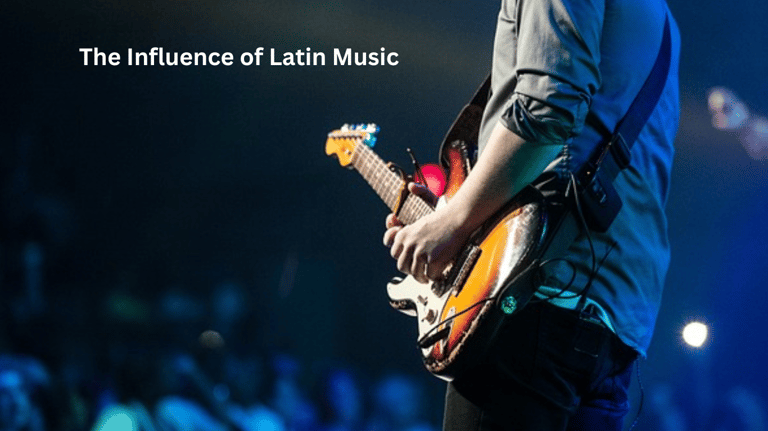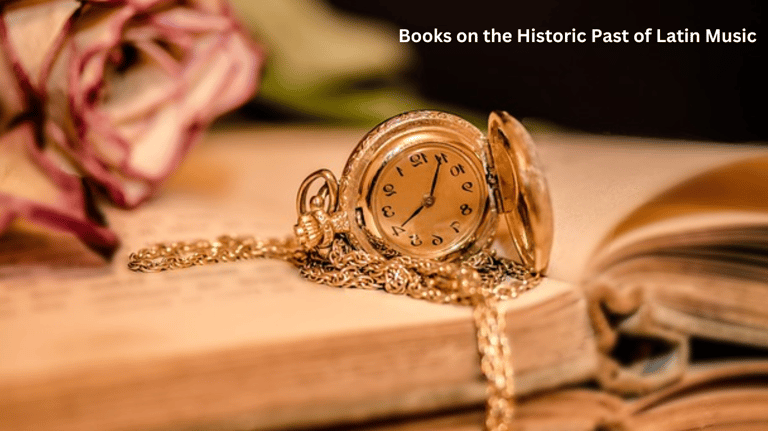The Influence of Latin Music Books That Explore Its Rich Heritag
1/25/20255 min read


"The Influence of Latin Music: Books That Explore Its Rich Heritage"
It's Latin music: The phenomenon, vibrated lovingly around the world with those own rhythms and melodies so appealing. Deep in also is this essential part of a more incredible culture. So transformed the sounds in so many different ways is Latin music shaped many genres, transcending many borders with influence on any conceivable corner in our music landscapes. A history and story around some sounds, identities, and survival. Such great heritage demands that someone take time seriously to look into literature defining Latin music. This piece is about Latin music influence, with some book talks on the history, evolution, and societal influences of Latin music.
Latin Influence Globally
Latin music is a genre that encompasses a wide range of styles and traditions, mainly from the Iberian Peninsula and Latin America. Styles such as salsa, reggaeton, bachata, samba, and cumbia are popular worldwide. Beyond catchy beats lies a story of migration, resistance, and cultural exchange.
Most obviously, what Shakira and Ricky Martin do to add Latin to mainstream pop is perhaps best captured by combining Latin and pop in a form one can envision. More than enough evidence that Latin music is mainstream is the mega commercial success of tracks by Luis Fonsi and Daddy Yankee in "Despacito."
However, its history is as significant.
It begins with being aware of Latin music's background. The underlying nature of this genre was during colonial times, during which there had been clashes in cultures. Different ways of the Africans, Europeans, and Indigenous peoples combined new sounds in music that reflected diversity in regions.
Most of these African rhythmic expressions were brought by slaves and would mainly impact Latin music. Latin music was thoroughly infused with the rhythms of the Conga and bongo drums. The strings and harmonic structures added by colonizers from Spain and Portugal merged into Latin music. Indians and others did their part; Indigenous peoples provided their melody and instrumental sounds with the addition of flute and percussion tools.
Books on the Historic Past of Latin Music
1. Decoding Despacito: An Oral History of Latin Music
Journalist/music executive Leila Cobo publishes inside scoop on one of the leading artists' hits in Latin music through an article in the recording. This freedom has allowed readers to comprehend better the events occurring within, as informed by the inside source of information when reporting the evolution of Latin music in its standpoint position within the universal musical, cultural structure.
2. Celia: My Life, by Celia Cruz
This is the autobiography of Celia Cruz, the "Queen of Salsa," about her unbelievable journey with one of the significant figures of Latin music. The book is about her personal and professional life, a view of all the work she's done in salsa and reflections on how she embodies her culture with all its glory.
3. Salsa: A Taste of Hispanic Culture, Charley Gerard
This is one book that narrates the history and cultural values surrounding salsa music. The book delves into the genre's origin, Afro-Cuban traditions, and how it transformed in New York City during the 1960s and 1970s. Gerard broadly discusses salsa's musical forms and its implications for identity and social issues.
4. Bachata: A Social History of Dominican Popular Music by Deborah Pacini Hernandez
She is the first full-length work about bachata music tracing the genre back to a genre of the Dominican Republic but tracing out how the rurally marginalized mode made its way through becoming an international genre. This way, she brings more light onto its cultural and political implications.
5. The Latin Beat: The Rhythms and Roots of Latin Music from Bossa Nova to Salsa and Beyond by Ed Morales
In the most literal terms, it acts as a guide as it moves on its path, delineating Latin music through bossa nova and sambas ahead to move to Latin jazz. Keeping abreast with those sociopolitical surroundings through frames of a style within visions, the book tries to take an ultimate shape based upon a unique read over one interesting individual theme for Morales.
6. Reggaeton, Raquel Z Rivera and Wayne Marshall Deborah Pacini Hernandez End
A genre of Latin music that is pretty popular today contains history within itself as has been explored up to the essays in the making of reggaeton, linkages with discourses on race, gender, etc. and going for global consciousness form works.
7. Cuban Music: From Son and Rumba to the Buena Vista Social Club and Timba Cubana, by Maya Roy
According to Maya Roy, this book gives a living impression of Cuba's son, rumba, and timba music culture and details the influence Cuba has on Latin music. Further, it finds its life within contemporary global culture.
8. Music of Latin America, Isabelle Leymarie
This is a collective work from an account delivered to all styles of music used for entertaining Latinos. From pre-Columbian days until the current times, music that emerged on this Earth, Leymarie's account sheds light on a reader relating to all those regional music.
Music and Literature:
In Latin music literary books, book writings also realize that culture sustains itself into books. Works like 'Bacharengas.' are not a history but a means of expression for the suffering and victory of the artists, the political and social situation that moulds the piece, and the transformation movement that the music was and continues to affect by its releases. The works read bring an audience closer to a better understanding of the complexity and richness of Latin music.
Future of Latin Music
The influence dies with the long run of Latin music. Newer artists try to forward creativity to draw a much younger crowd towards it. Further, digitalization has equalized music. It has created more opportunities for Latin artists to be popular worldwide.
FAQS
1. Which genres do Latin music comprise?
More significant Latin music styles are Salsa, Reggaeton, Bachata, Samba, Cumbia, Merengue, tango, and Latin pop-each with unique features and cultural-historical value.
2. How has Latin rhythm and sound influenced the development of other styles?
Latin rhythm and sound contributed much to the development of others: pop, jazz, rock, and hip-hop artists use Latin rhythms and instruments in their work and incorporate Latin musical motifs with others.
3. Who are names which are household names in Latin music?
Latin music still receives global recognition because of great icons such as Celia Cruz, Tito Puente, Carlos Santana, Shakira, Ricky Martin, and Bad Bunny. They have greatly ensured that this genre reaches all over the world.
4. What about Latin music has attracted people so widely globally?
It has become so popular because it is catchy because themes are there, generally for artists, and due to its global outreach. More than that, it's more popular because with streaming services, it amplifies the popularity since it maximizes the maximum population on earth that can listen to it.
5. How can I get to know Latin music even better?
Other ways to familiarize yourself with the genre and listen to even more Latin music include reading books, attending live concerts, and scrolling through playlists by other Latin music fans.







